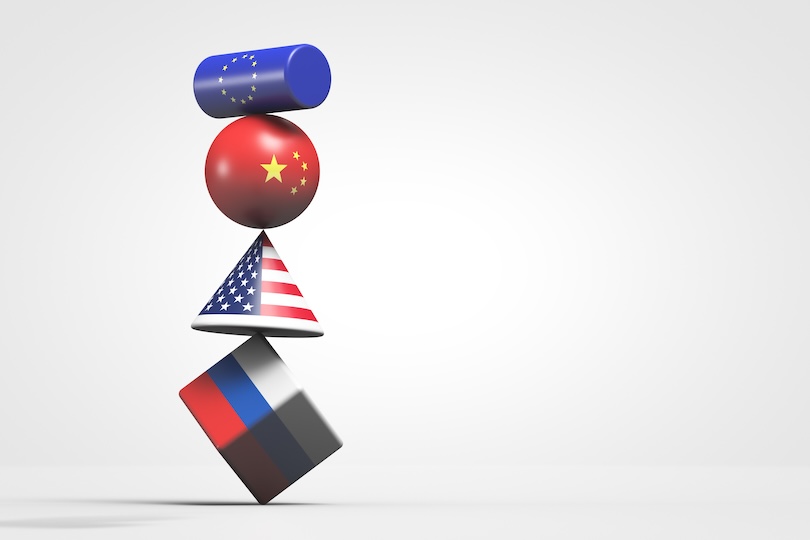New paths in the post-Cold War world

This is an excerpt from Neutrality after 1989: New paths in the post-Cold War worldedited by Naman Karl-Thomas Habtom. You can download the book for free at E-International Relations.
Following the collapse of the Soviet Union and the rise of the United States as the world’s sole superpower, neutrality was seen by many as a relic of the Cold War. However, the emergence of new powers and the gradual shift toward multipolarity as countries such as Russia and China assert their influence and challenge the US-dominated international order have, in turn, revived neutrality in its various forms. This book begins with a series of chapters examining Europe’s “old neutrals” through the contemporary neutrality of Austria and Switzerland, the decline and end of Sweden and Finland’s neutrality, and the resilience of Ireland’s neutrality. Later chapters address the emergence of “new neutrals” through examinations of Vietnamese “bamboo diplomacy,” Israel’s efforts to balance its relations with Washington and Moscow, and Oman’s non-interventionist foreign policy. As the various chapters demonstrate, the role of neutrality—and its perception or misperception—remains crucial to understanding contemporary geopolitics and international relations.
In the popular imagination, neutrality is understood as a policy aimed at not entering into wars and/or not choosing to side with a particular bloc. This perception, particularly in Western countries, is strongly shaped by the experience of World War II (1939–45) and the subsequent Cold War (1947–91), particularly as it manifested itself in Europe. In reality, neutrality is a complex and dynamic phenomenon, ranging from “active” to “passive” forms, from permanent to non-permanent, as well as various shades that are not technically neutrality but are often associated with it, such as military non-alignment.
The end of the Cold War and the prospect of American unipolarity led countries around the world to rethink the meaning and necessity of neutrality. For some, this meant a diminished importance and a gradual abandonment of the idea, as neutrality had previously been underpinned by a bipolar world that no longer existed. Following the start of the full-scale Russia-Ukraine conflict in February 2022, the non-aligned (but often still falsely described as “neutral”) countries Sweden and Finland applied to join the North Atlantic Treaty Organization (NATO) – and later completed their accessions – signaling a further decline in the role of neutrality in the 21st century.
The history of neutrality is not limited to Europe, however. This is especially true in the post-Cold War era. While the 1990s and 2000s represented US (and Western in general) hegemony, the 2010s and 2020s have been marked by growing multipolarity. With the increasing number of emerging powers, the desire to hedge one’s bets and not to fully align with any one major power has grown. Thus, while Western observers often cite the irrelevance and/or death of neutrality, the story is quite different elsewhere. This book hopes to shed light on this ongoing development. It seeks to illustrate that the rise and fall of neutrality are occurring simultaneously for a variety of different reasons. In discussing neutrality, this book uses a broad definition to reflect the wide range of experiences of the countries covered and their unique approaches to international affairs.
In the first chapter, Pascal Lottaz examines Switzerland and Austria, the archetypes of neutrality. Although they are perceived from the outside as similar neutral Alpine states, Lottaz shows that these similarities are in fact superficial. The differences lie in both their histories and the underlying philosophies that guide their policies, which in turn influence the way the two understand their own neutrality. In the second chapter, Erik Noreen and Roxanna Sjöstedt look at Sweden. For decades, the country was considered the epitome of a neutral state that was nevertheless engaged in global issues. Even after the Nordic country formally abandoned its neutrality when it joined the European Union (EU), it pursued a policy of non-alignment. Nevertheless, as Noreen and Sjöstedt show, Sweden remained a militarily active country, conducting operations around the world with NATO. The chapter explains how Sweden moved closer to NATO while still officially non-aligned.
In the third chapter, Jussi Pakkasvirta and Hanna Tuominen turn to another neutral Nordic country: Finland. After the end of the Cold War, Finnish ideas about neutrality underwent a major transformation, leading first to Finland’s membership in the EU, later to military operations in NATO, and finally to NATO membership. Their chapter traces and analyses this three-decade-long development. The fourth chapter of Karen Devine’s book focuses on Ireland, which has resisted the European trend of military deneutralisation after the Cold War. Instead, the country has shown remarkable resilience and commitment to neutrality despite significant and growing pressure from political elites inside and outside Ireland.
In the second half of the book, in chapters five, six and seven, we leave Europe to see the different ways neutrality is used around the world. In his chapter on Vietnam, Nguyen Khac Giang explains how the Southeast Asian country conducts its “bamboo diplomacy” as it tries to balance its relations with the United States and China while pursuing an independent foreign policy. Israel is the focus of Liudmila Samarskaia’s chapter. Although the Israeli government is widely seen as an American ally, it has sometimes gone its own way. This is especially true in recent years as it tries to balance its relations with Washington, Moscow and Beijing in pursuit of its own national security interests – thus pursuing a policy of selective neutrality. Another country associated with neutrality, sometimes referred to as the “Switzerland of the Middle East”, is Oman. In the final chapter of the book, Roby Barrett and Leah Sherwood argue that this perception is false and that Muscat is in fact a partisan non-interventionist. This policy, the authors argue, is contrary to that of truly neutral states and runs counter to Realpolitik Approach that has enabled the country to play the role of mediator while pursuing its own interests.
The countries studied in this volume were chosen for their wide range in the interpretation of neutrality. They illustrate the fact that neutrality, as interpreted internally or externally, is never a simple or straightforward policy, but rather the synthesis of national interests, historical and current circumstances, and domestic and foreign policy realities. Understanding what neutrality is or is not therefore requires a broader view of global developments. By better understanding these nuances, readers – whether motivated by personal interest, academic research or political responsibility – will realise that states practicing neutrality and its derivatives do not fit into simple categories, but rather are adapted to their own traditions and ongoing challenges and are perceived accordingly.
By focusing on the post-Cold War period, this volume seeks to affirm the contemporary relevance of neutrality as a conceptual framework in both international relations and domestic politics. After the collapse of the Soviet Union and the supposed “end of history” (Fukuyama 1989), neutrality was largely either relegated to the history books or viewed as an unconventional quirk or remnant of the Cold War. However, this volume, which complements the work of others, such as Lottaz et al. (2022), shows that neutrality—and the need to understand its dynamics—remains as important as ever. Neutrality is not simply the product of bipolarity, as the Cold War era might suggest, but can actually emerge in times of unipolarity or multipolarity. Moreover, the various manifestations of neutrality are often unique because of their relative rarity—though not as rare as perhaps commonly assumed. This requires an exploration of the different forms it takes or the reasons why it is abandoned, which is what this volume aims to contribute to.
Neutrality is alive and well both as a concept and as a phenomenon. Understanding it, as the chapters of this book attempt to do, is crucial as multipolarity becomes a growing force in world politics. In such an ordered world, neutrality in its various forms is likely to continue to be a tool used by various states, and recognizing it as such helps us understand the world both as it is today and as it might be tomorrow.
References
Fukuyama, F. 1989. “The End of History?”. The national interest. 16, 3–18.
Lottaz, Pascal; Heinz, G; and Herbert, RR 2022. Neutral beyond the cold: Neutral states and the international system after the Cold WarLanham: Lexington Books.
More information about E-International Relations



